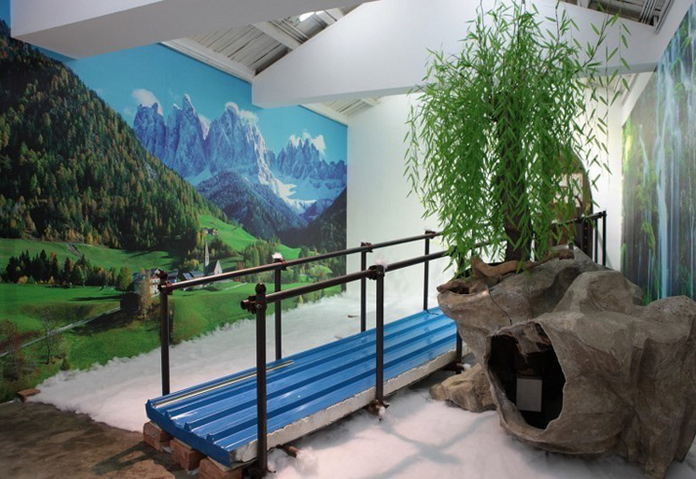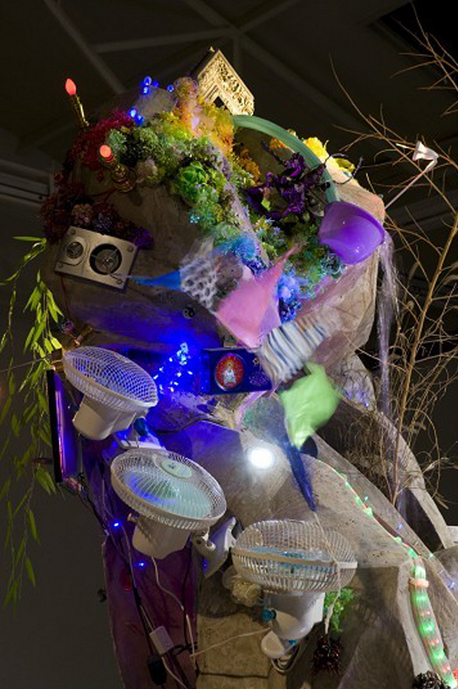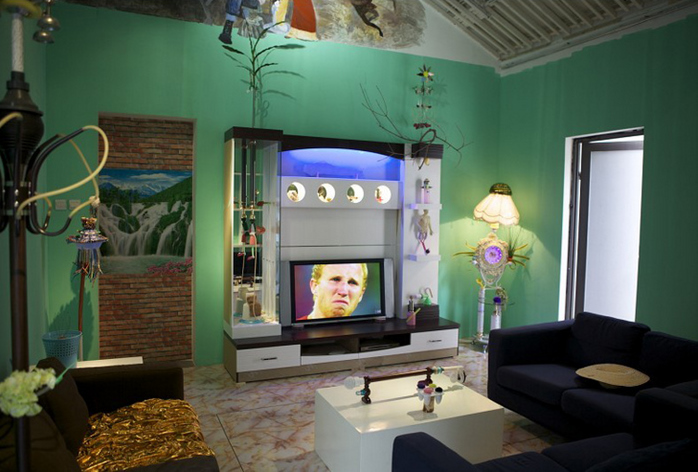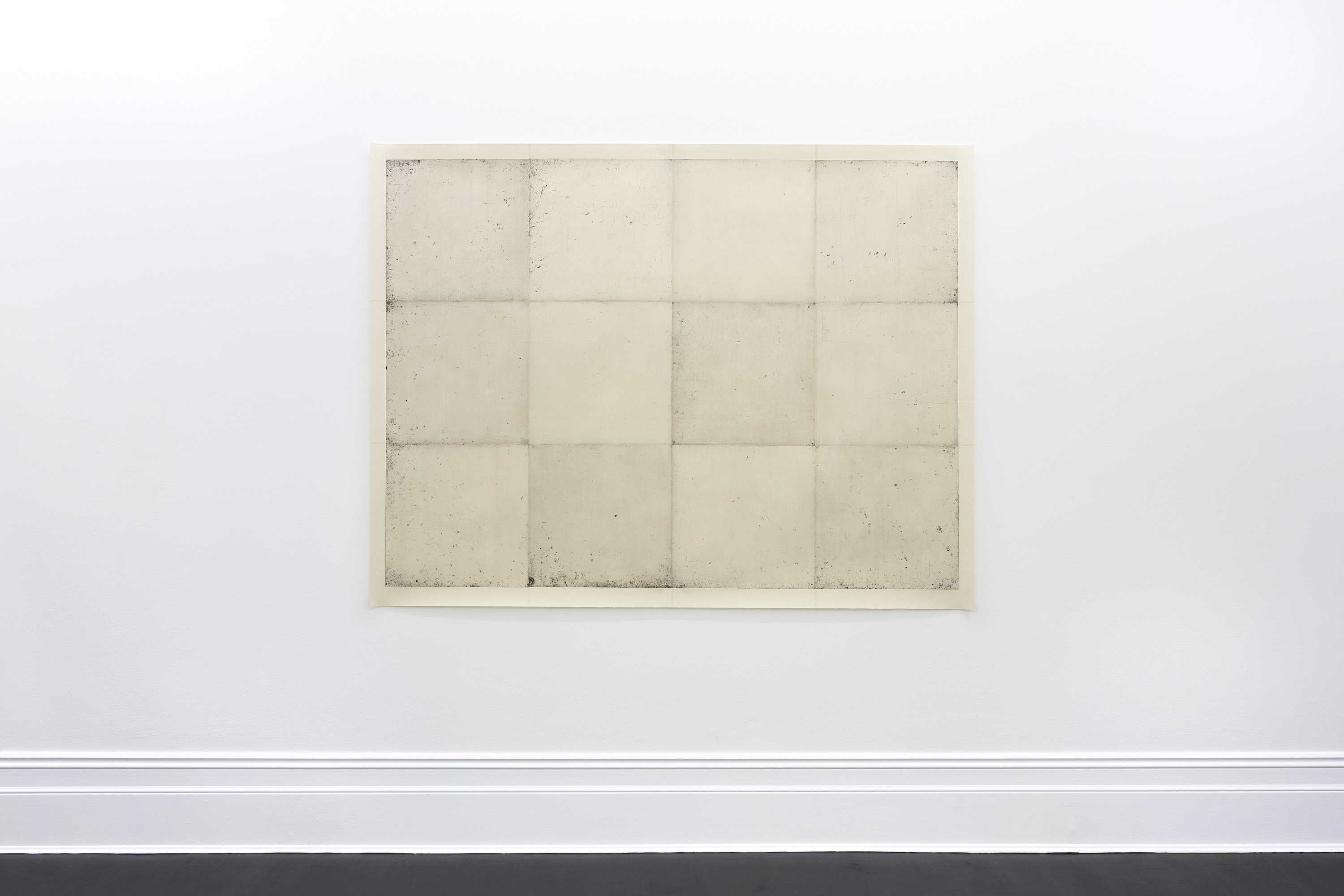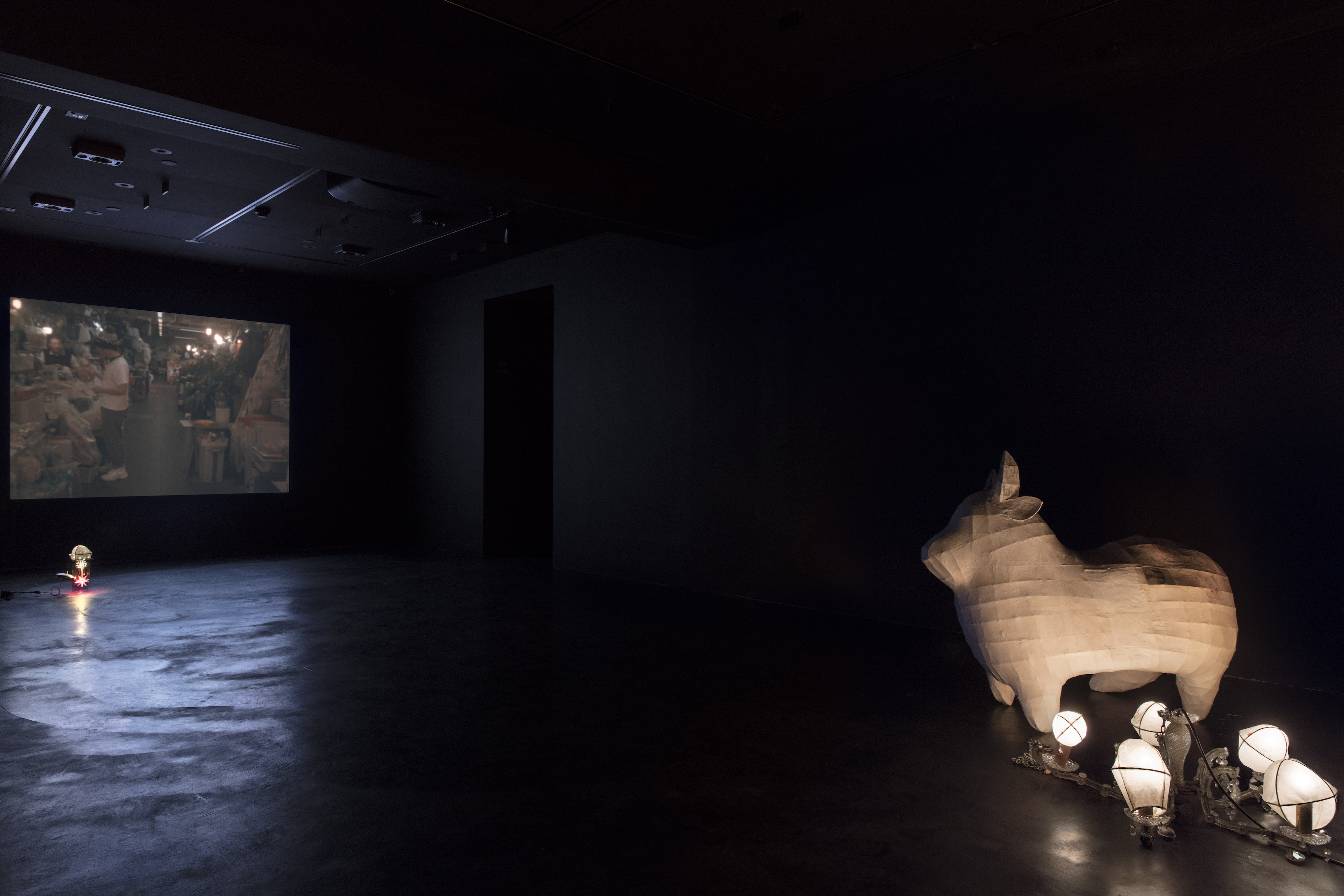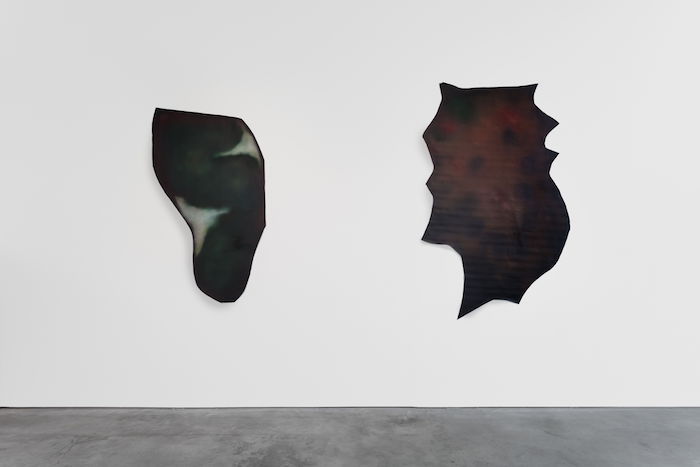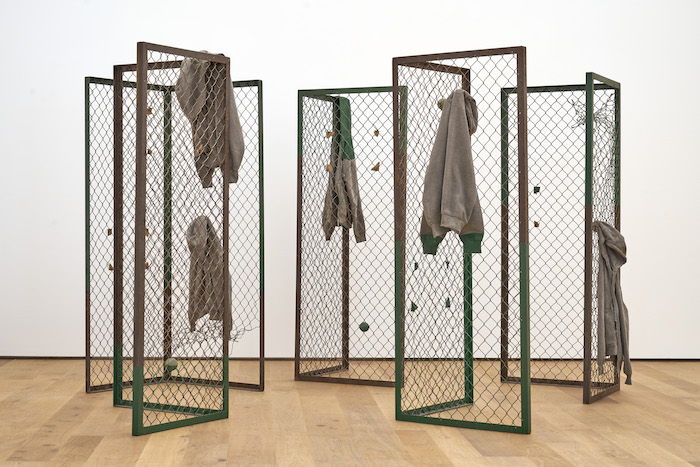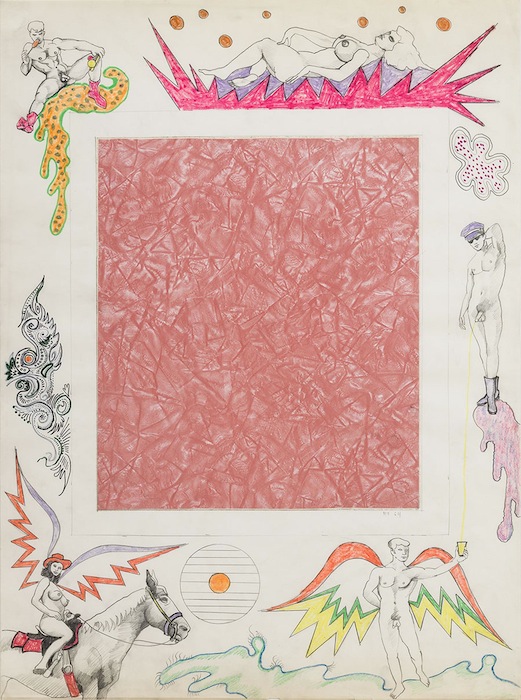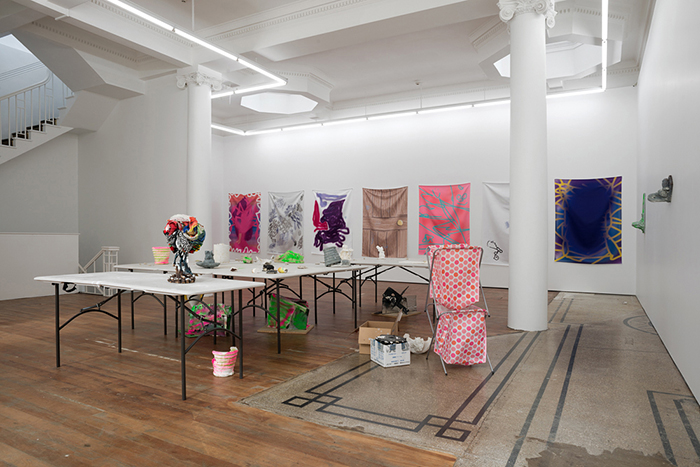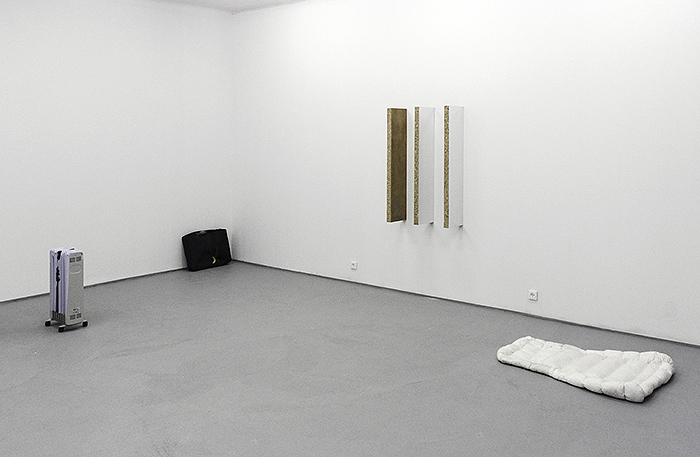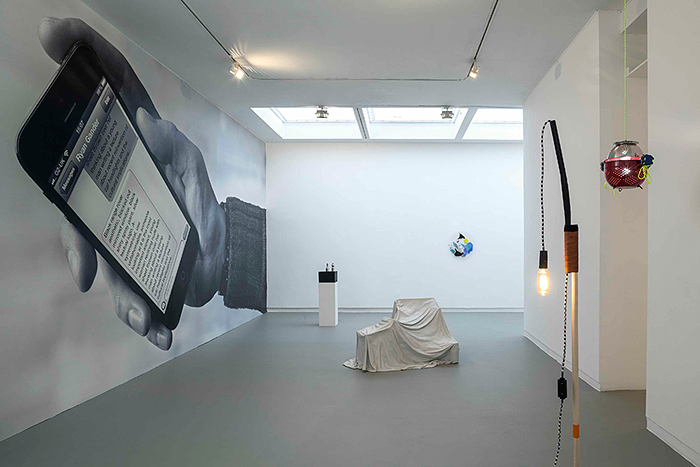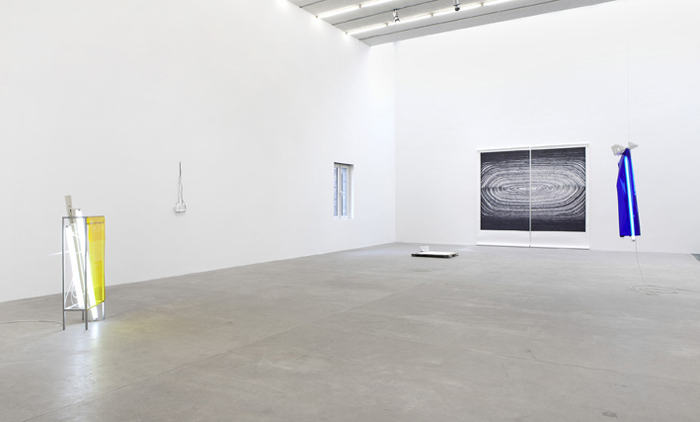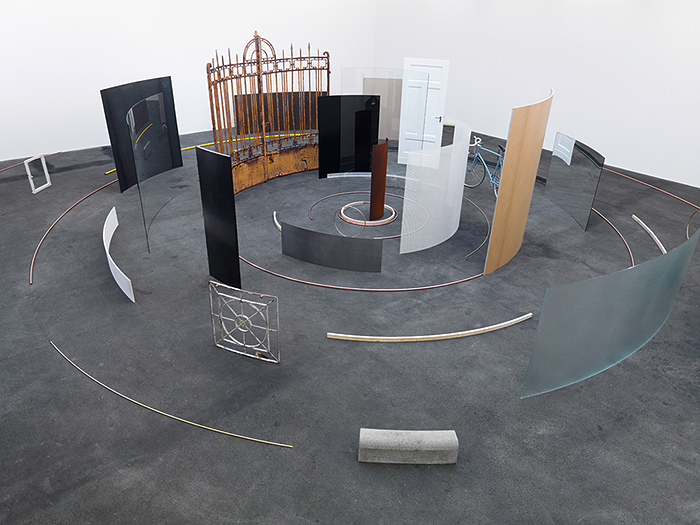June 12–July 25, 2010
Liang Shuo’s most recent solo showing "Fei Te" ("Fit") involves a bit of wordplay. The Chinese words "fei" (expense) and "te"(special) register meaning individually but their combination does not, except as a phonetic match for the English word "fit." The same might be said about Liang’s current installation, a sprawling effort chock-a-block with myriad sponges, plastic foliage, clocks, broom handles, mop heads, clothespins, lampshades, curtain rods, plungers, hangers, cheap laminate surfaces, and mattresses. Taken on their own, these everyday objects may have practical meaning and use but after being unceremoniously combined, lumped, fastened or jammed together, their functionality is lost. What remains is the unwavering presence of their shape, color, texture, and form.
Containing objects copiously collected over the past two years and assembled on-site over a month, "Fit" is a monument to the plastic, gaudy, and jerry-rigged aesthetic that permeates contemporary China. There is no apparent logic to the circular layout of the five rooms—which begins with an ad-hoc shower-fountain walled-in by plastic covered furniture and upright pieces of cut flooring and proceeds to a garish mint-colored living room set-up; followed by a room of freestanding sculptures, a stacked assemblage of desks, tables and cabinets with piped in classical music; and finally an open passageway lined with photo murals of European-style scenery criss-crossed by a raised walkway hovering above a bed of artificial snow. Or is that white substance covering the ground meant to represent clouds? It hardly seems to matter, since Liang’s interest seems firmly entrenched in the detritus itself, most of which he has fashioned into eccentric sculptures and juxtapositions according to shared formal qualities or a hidden intrinsic energy residing in the object itself. These one-off gestures—conjoining lotion bottles with plastic tubing, kitchen scrubbers with chrome showerheads – may call to mind Japanese artist Koki Tanaka but where Tanaka edges towards actions performed upon objects, Liang sticks closer to inert displays that reveal his roots as a sculptor.
Much has been made about the use of everyday objects in art—in particular the candy-colored assortment of cheap plastic goods readily found in Asia, which have become easy stand-ins for pat critiques targeting consumerism, production or manufacturing. But in Liang’s hands the social meanings we might attach to these materials fades from view. Instead we are left pondering an aesthetic context of such absurdities as Louis Vuitton emblazoned bicycle seat covers, frog-shaped plastic garbage bins, beaded curtains made from plastic flowers, and digitized images of Mercedes-Benz cars bedazzled with glitter and jewel-like materials. Liang’s productive preoccupation with these common objects has little to do with global markets and more to do with local ones—namely those of the artist’s own milieu in Beijing. His current compulsion with fitting and piecing everything together has become as acute as his eye for tracking and replicating the kitschy tastes and thrown-together tendencies that persist around him—both are distinctly homegrown and, for better or for worse, neither are in short supply.
